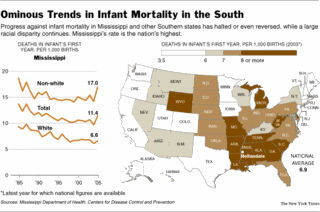<!-- -->
Wednesday, June 24, 2009 Francis L. Holland is a Socialist! My Own Personal Socialist Manifesto
- Like President Daniel Ortega of Nicaragua, President Fidel Castro of Cuba and President Hugo Chavez of Venezuela, Francis L. Holland is a socialist. Francis L. Holland believes that everyone who passes the medical school entrance exam should be provided a free and public education, just as was the case in Nicaragua under the socialist Sandinistas in the 1980's, and continues to be the case in Cuba today. So, Francis is a socialist.
- Francis L. Holland believes that all children should be offered a free, public and equal education. As such, he believes in socialized education, although he certainly hopes the United States will not stop offering free and public education simply out of ideological opposition to socialism.
- Francis L. Holland believes that the US's oil revenues should be used to support social programs, just as Hugo Chavez is doing with the oil revenues from Texaco in Venezuela today. So, Francis is a socialist.
- Francis L. Holland believes that the United States government should institute a national program of neighborhood health clinics where care is free, and frequently staffed by doctors and nurses who have received a free medical or nursing education paid for by the United States Government. So, Francis L. Holland is a socialist.
- Francis L. Holland believes the United States should study Cuba's national health care system and implement such parts of it as are necessary to reduce infant mortality in the United States to levels below Cuba's rate of infant mortality. Since the United States is so much wealthier than Cuba, it ought not be impossible to beat Cuba's infant mortality rate, if health care resources are allocated more equally and appropriately.
- Francis L. Holland further believes that the United States Government should expand and improve the system of Veterans Administration Hospitals until every person in the United States - not just veterans - can receive free medical care from these Government-run hospitals. These hospitals should be available in every city and area of the country, just like in Brazil. If this is socialism, Francis L. Holland is proud to call himself a socialist.
- Francis L. Holland believes that all medically necessary drugs should be available from the US Government for free, with the cost paid for by Government production of generic medications (like in Brazil) and bulk purchases of medications from pharmaceutical companies, as Wal-Mart does, and as the government of Brazil does. If believing that everyone who needs medication should receive it is a socialist concept, then Francis L. Holland is proud to be a socialist.
- I believe that garbage collection and dumping in a central government-designated location is an appropriate government function and I strongly oppose anyone who suggests that each of us should hire a garbage collector in the free market. If we had private garbage collection as our principle means of removing garbage, then we would have massive illegal dumping, courts clogged with cases related to the failure of these private operators to do what was expected of them, and massive transaction costs associated with weighing garbage and billing for garbage collection.
- I think garbage collection is analogous to health care. We all have health care problems from time to time, and the Government should be there to collect and dispose of those problems. When so many people need the same thing on such a regular basis, it only creates chaos to have hundreds of thousands of free-market profiteers doing what the central Government should do. Only small towns can survive without centralized garbage collection and disposal, and a nation of three hundred million people cannot possibly meet the health needs of its populace through individual contracts and private enterprise.
- Francis L. Holland is not a socialist as a result of his participation in any local, national or international socialist party. Francis L. Holland is a socialist by virtue of his own adopted political and economic beliefs, which are socialist rather than capitalist or anarchist in nature.
- Francis L. Holland believes that the role of the Government is to provide for the needs of the people. The Government's role ought never be to maintain a free market that provides for the opportunity for individuals to become rich by manipulating, exacerbating and capitalizing on the needs of the people and the markets.
- Francis L. Holland believes that the Government should represent the people, and the elected leaders should be representatives of the people. However, Francis L. Holland does not believe that United States' form of government is necessarily the best or only way to achieve this result. For example, the United States has 13% Black residents and only 1% Black representation in the US Senate, because every US state has a white majority and US Senate elections are statewide, majority-wins elections. In this sense, processes that are supposedly "democratic" can result in manifestly undemocratic results.
- Francis L. Holland does not believe that market forces should govern the distribution of a country's wealth unless those market forces result in a relatively even distribution of wealth. Where market forces result in grand differences between the wealth of rich and poor, with the poor lacking basic necessities while the rich have thousands and millions of times more resources than are necessary for their basic necessities, then these market forces are perverse and should be be disallowed.
- Capitalist market forces should not be allowed unless they result in a distribution of wealth that meets everyone's basic needs. As a matter of fact, purely capitalist market forces as a means of distribution of resources never meet the basic test of providing for everyone's basic needs, and that is why Francis L. Holland rejects purely capitalist free markets.
- Francis L. Holland supports those aspects of US Government policy that tend to distribute resources more evenly; such as free public schools; free public libraries, free streets, roads and highways that are paid for by the government from tax revenues instead of being privately owned; Government-owned national parks; nationalized military defense; national postal service, the national Centers for Disease Control, NASA, national baseline regulation of pollution and product qualiity control; and national efforts toward epedimiology.
- (By the way, why should we have national efforts of epedimiology and private capitalist treatment for disease in individuals? Why should the federal government concern itself with identifying diseases of national scope while rejecting responsibility for treating diseases of national scope? Why is it permissible to nationalize the identification of disease but not the treatment of disease?)
- The measure of representative Government is not the processes that are used to elect leaders but the results of those processes. If the processes do not result in representation of the people, then calling them "democratic" does not render them representative.
- Needless to say, neither the US's Democratic Party nor the Republican Party espouses the ideology explained above, and so Francis L. Holland is neither a Democrat or a Republican as those terms are used today in the United States. Francs L. Holland is a socialist who votes for the party and candidate that most approximate and least offend his views.
- In practice Francis L. Holland votes for Democratic candidates and not Republican ones because the Republicans favor unbridled capitalism and greed, with local, state and national police forces to assure that the unequal distribution of wealth is not overturned by popular revolt. Meanwhile, the Democrats believe in bridled capitalism with programs to ameliorate the results of unbridled capitalism, and with local, state and national police forces to assure that the unequal distribution of wealth is not overturned by popular revolt.
- Francis L. Holland believes that police forces, be they private, local, state or federal, ought never be used to impose or perpetuate upon a populace an economic or social relationship which does not meet the needs of the populace. And so, Francis L. Holland is neither a Democrat nor a Republican. He is a socialist.
- As a Black man, Francis L. Holland has considerable experience with being called derogatory names aimed both at him personally and at his demographic group as a whole. Like being called "Black", Francis L. Holland does not object to being called a "socialist"; he objects only to the negative and derogatory connotations that America's society and ideology have associated with the terms "Black" and "socialist".
<!-- -->
Tags: police | health care | firefighters | World | Armed Forces | socialism | Veterans Administration | UK Politics | Public Health Service



















